How to identify and trade popular candlestick patterns

Candlestick charts are one of the most popular tools used in technical analysis. By condensing price data into an easy-to-read format, candlestick charts help traders visualise the battle between buyers and sellers in a market.
When used properly, candlesticks can reveal powerful insights into market psychology and identify potential trading opportunities.
The anatomy of a candlestick
Candlesticks have three main components:
- The body, representing the price range between the opening and closing prices.
- The wicks or shadows, showing the highest and lowest prices reached.
- The colour, indicating whether the sentiment of the candles are bullish (positive, often green) or bearish (negative, often red).
A long body suggests stronger conviction, while long wicks show rejection by either buyers or sellers. The relationship between the body, wick, and colour offers clues into the supply and demand dynamics in the market.
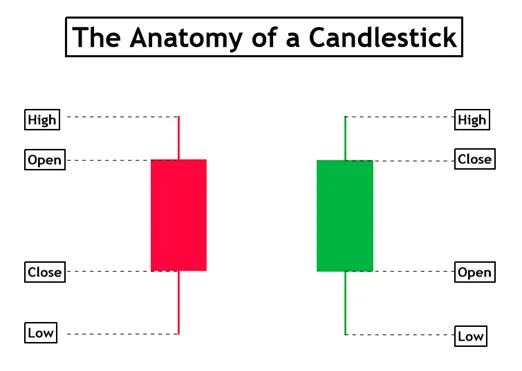
Major candlestick pattern types
There are 3 major candlestick pattern types:
- Reversal patterns indicate potential trend reversals and shifts in momentum.
- Indecisiveness patterns demonstrate a struggle between buyers and sellers with no clear control.
- Continuation patterns suggest a pause or consolidation within an overall trend.
Within these broad categories, there are dozens of uniquely named candlestick patterns, each offering its own nuanced interpretation and potential trading signal.
Deeper insights into specific patterns
Bullish trend reversal patterns
Hammer: This consists of a small body at the top of the candlestick and a long lower wick. It suggests a potential bullish reversal, indicating that buyers are stepping in after a downtrend. While the hammers body’s colour may differ, green tends to be a stronger bullish market indicator than red.
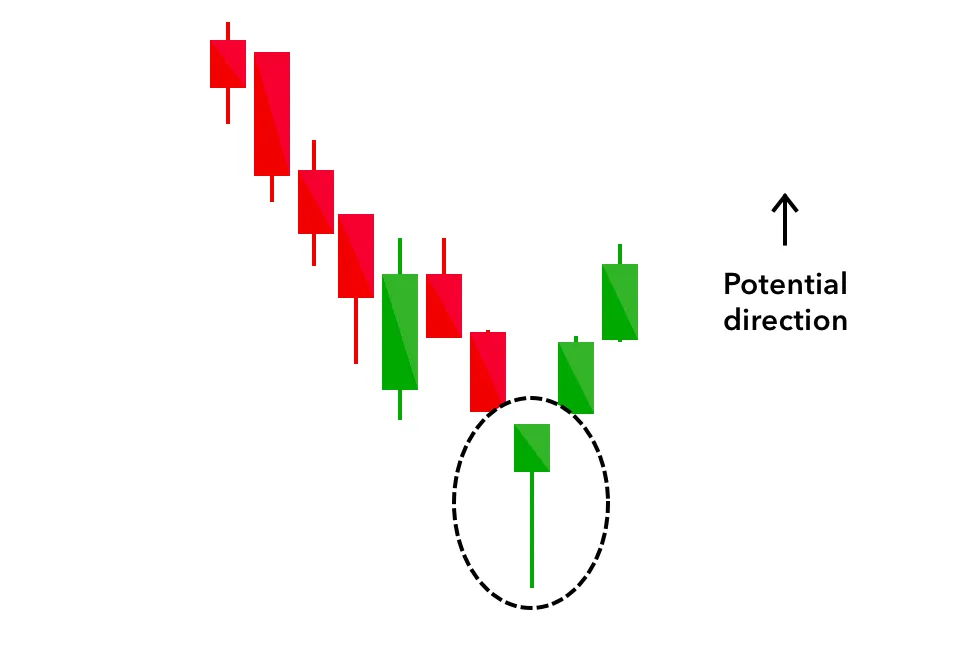
Inverted Hammer: This features a small body at the bottom of the price range, a long upper shadow. It potentially signals a reversal to an uptrend, suggesting that buying interest is increasing after a period of selling pressure.
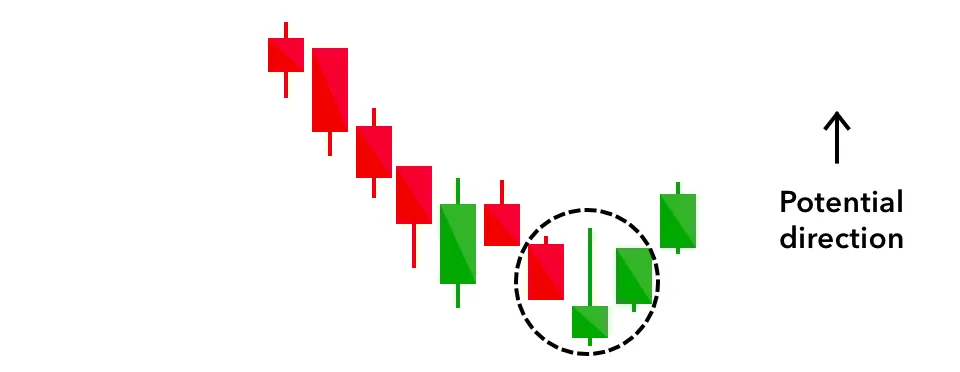
Bullish Engulfing: This occurs when a smaller, bearish candlestick is followed by a larger, bullish candlestick that completely ‘engulfs’ the previous one. It indicates a shift from selling to buying pressure and suggests a possible trend reversal.
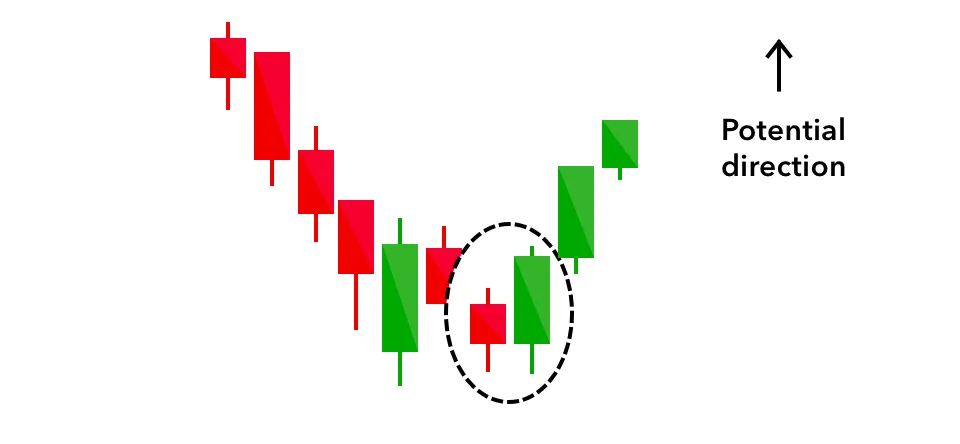
Morning Star: This appears during a downtrend and consists of three candles; one long red candle, one small-bodied red candle with a lower range, and one larger bullish candle that closes above the midpoint of the first candle. It is viewed as a glimmer of hope during a downtrend, suggesting a bullish reversal may occur.
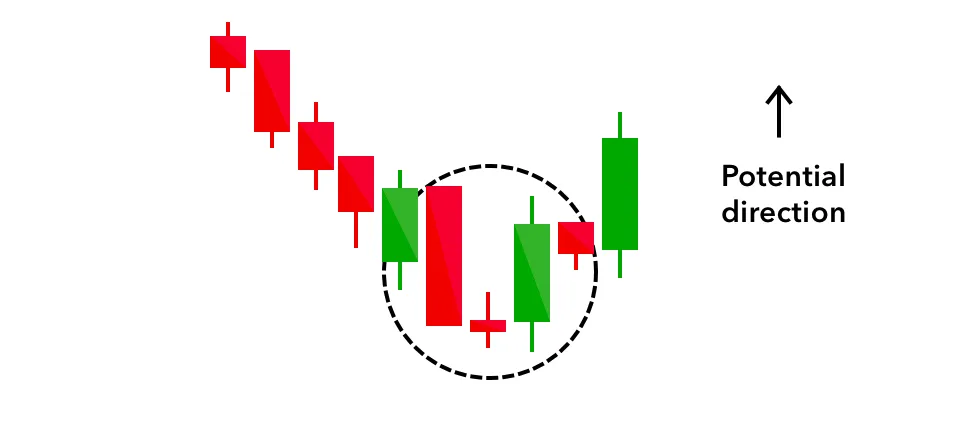
Piercing Line: This occurs when a bearish candle is followed by a bullish candle. The bullish candle opens below the previous candle’s low but closes above its midpoint. It indicates potential buying pressure and a possible trend reversal.

Bullish Harami: This involves a long bearish candle followed by a smaller bullish candle that is contained within the range of the previous candle. The reliability of the pattern is higher when the second candle opens with an upward gap. It suggests a potential bullish reversal.

Bearish trend reversal patterns
Shooting Star: This has a small body near the bottom of the candlestick and a long upper wick. Typically, the opening price will have an upward gap, then rise to reach a high during the day before closing near or below the opening price. This movement resembles a star descending to the ground, suggesting a potential bearish reversal, indicating that sellers are stepping in after an uptrend.
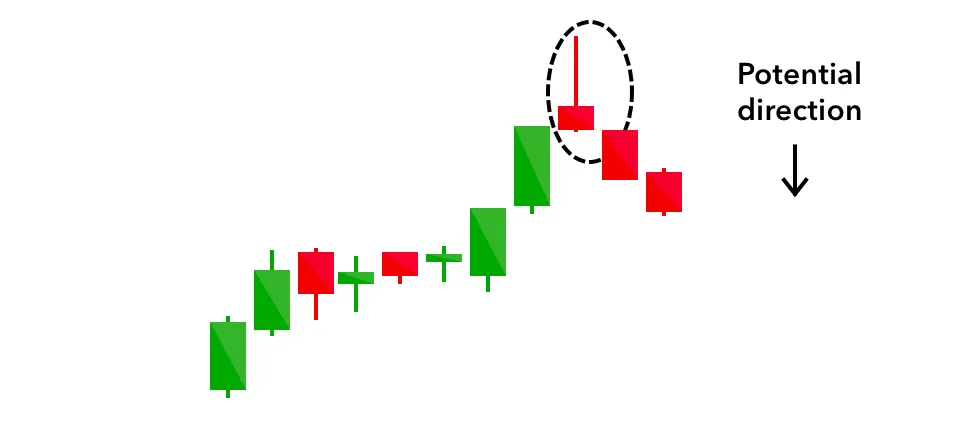
Bearish Engulfing: This occurs when a smaller bullish candlestick is followed by a larger bearish candlestick that completely engulfs the previous one. It signifies a shift from buying pressure to selling pressure and suggests a possible trend reversal.
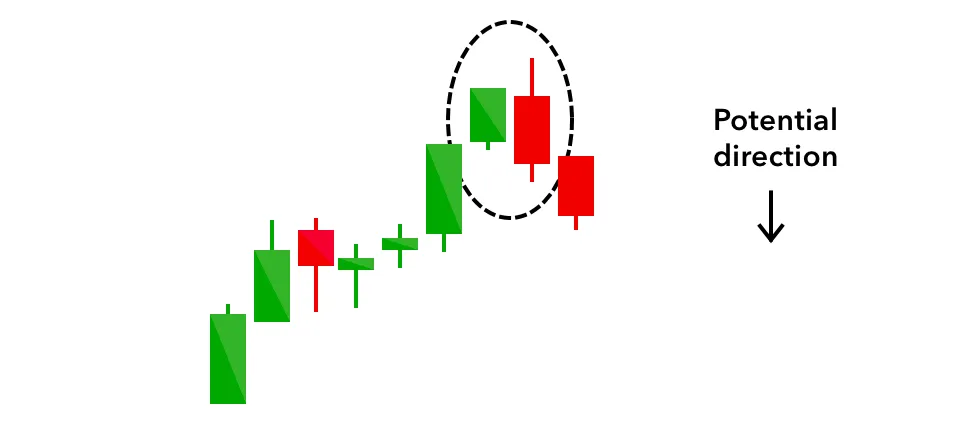
Evening Star: This appears during an uptrend and consists of three candles. The first is a long bullish candle, followed by a small-bodied candle with a higher range. The third candle is a larger, bearish candle that closes below the midpoint of the first candle. This pattern suggests a bearish reversal is likely and is typically stronger when the third candlestick nullifies the gains of the first candle.
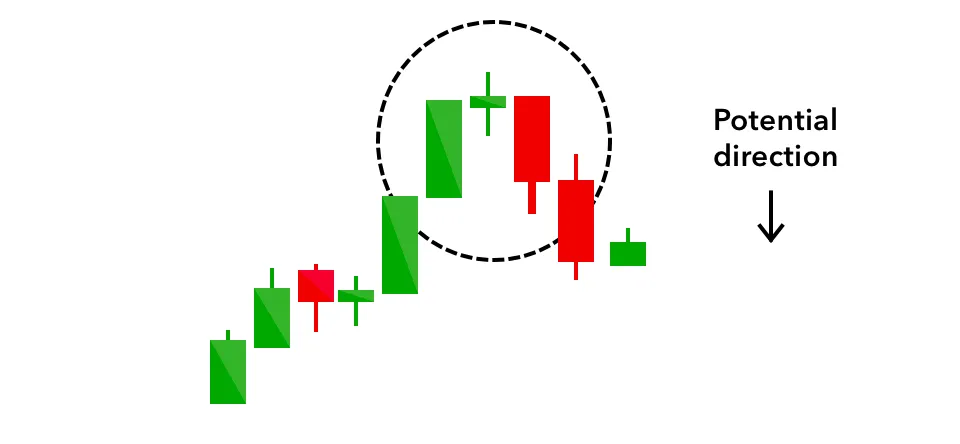
Dark Cloud Cover: This occurs when a bullish candle is followed by a bearish candle that opens above the previous candle’s high but closes below its midpoint. It indicates a possible trend reversal due to increased selling pressure.
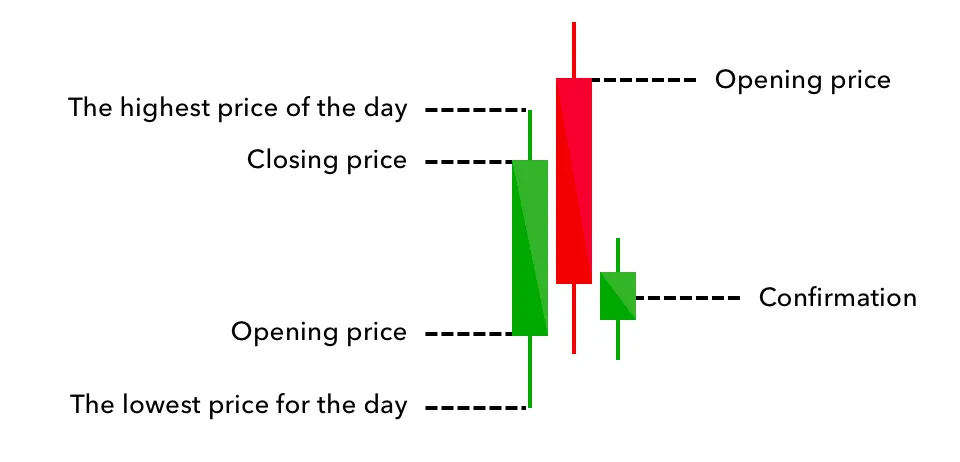
Bearish Harami: This involves a larger, bullish candle followed by a smaller, bearish candle that is contained within the range of the previous candle. It suggests a potential reversal due to weakening buying momentum.
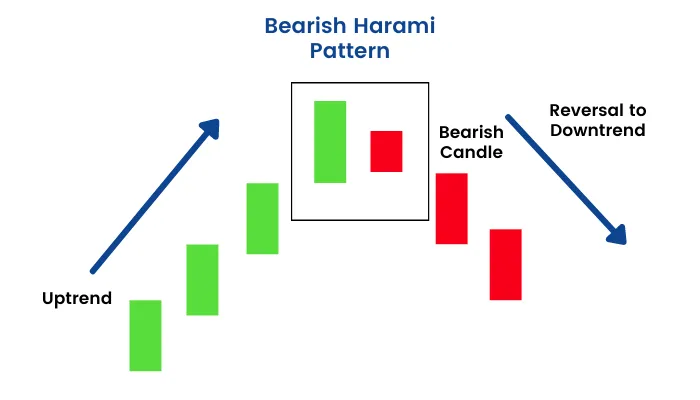
Hanging Man: This consists of a small-bodied candle with a long lower shadow. This pattern suggests potential weakness in the uptrend, signalling a possible trend reversal.
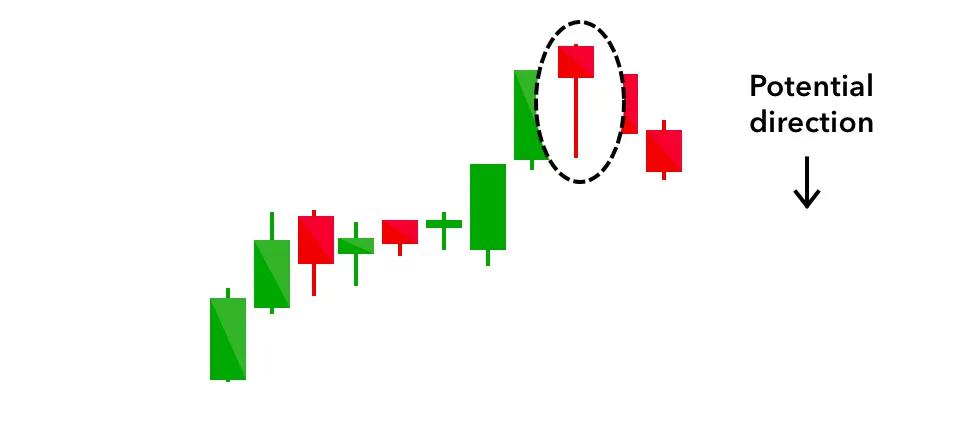
Indecisive patterns
Doji: This occurs when the opening and closing prices of an asset are very close or almost equal. It typically has a small body and upper and lower wicks. The doji pattern indicates that neither buyers nor sellers have control.
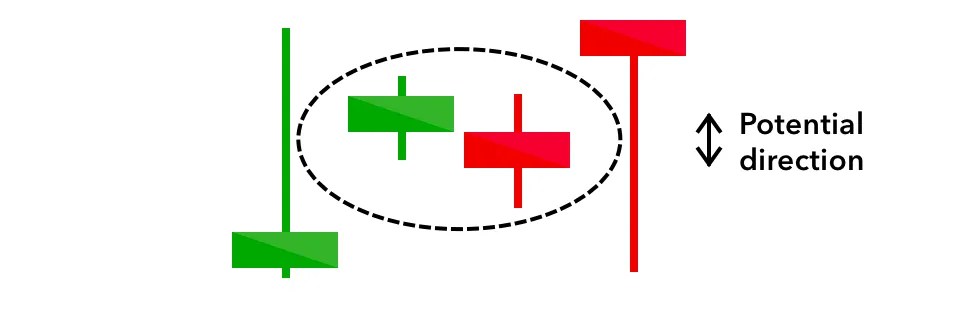
Spinning Top: This is characterised by a small body and long upper and lower wicks of equal length. It indicates a balance between buyers and sellers.

Continuation patterns
Rising Three Methods: This involves three short red bodies nestled between two lengthy green bodies, conveying to traders that buyers are still in command of the market.
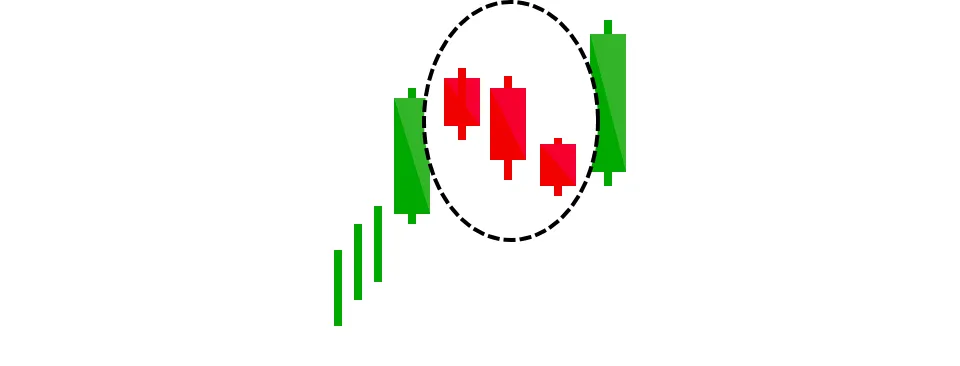
Falling Three Methods: This has three small green bodies sandwiched between two longer red bodies, signaling to traders that the overall trend’s downward momentum is too strong to reverse.
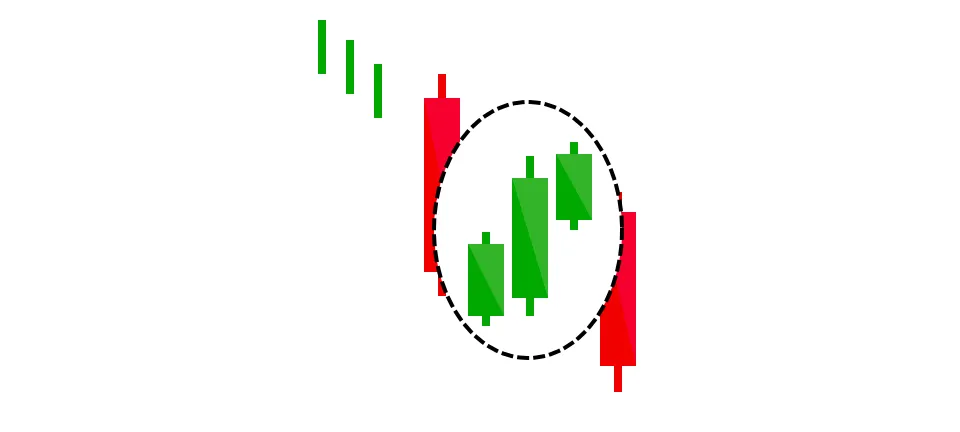
Trading candlestick signals
When trading candlestick patterns, it is important to confirm signals with other indicators like volume and moving averages. Traders should focus on patterns forming at key support and resistance levels. Candlestick signals can be traded by taking positions on breakouts and breakdowns.
Some further tips for improving candlestick analysis include:
- Considering the previous price action context
- Identifying patterns within broader technical structures
- Focusing on quality over quantity of signals
- Combining candlesticks with other forms of analysis
- Practicing regularly to gain experience.
Appropriate stop-loss and risk management strategies should always be utilised.
The time frame dimension
Beyond individual candlestick patterns, it is crucial to analyse price action across different time frames. What may appear as an indecisive pattern on a 5-minute chart could be a continuation pattern on a daily view. Shorter time frames reveal more detailed price action, while longer time frames provide broader context. Many traders use multiple time frames in their analysis to gain a more complete perspective. Identifying alignment between candlestick signals across different time frames can increase conviction for potential trades.
Conclusion
In summary, candlestick charts condense price data into an easy-to-decipher visual format that reveals insights into market psychology. Each pattern offers a nuanced interpretation of supply/demand dynamics. However, candlestick analysis is most effective when combined with other indicators and techniques. Traders should focus on high-quality signals forming at key support/resistance levels across multiple timeframes.
With practice, candlestick patterns can help traders make informed decisions, manage risk, and develop strategies aligned with market conditions.
Open a demo or live trading account with Deriv and start trading with candlestick charts.
Disclaimer:
The information contained within this blog article is for educational purposes only and is not intended as financial or investment advice.
Trading is risky. Past performance is not indicative of future results. It is recommended to do your own research prior to making any trading decisions.



